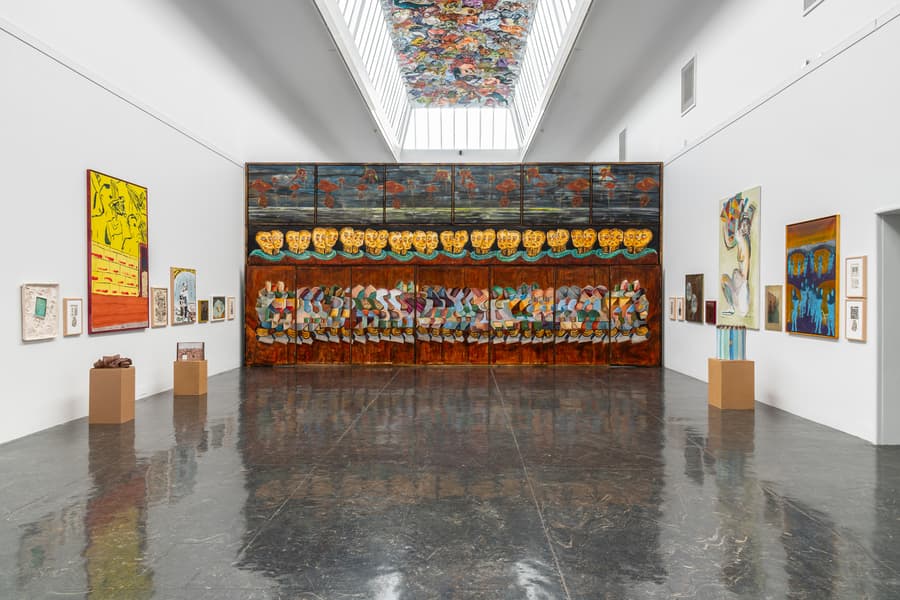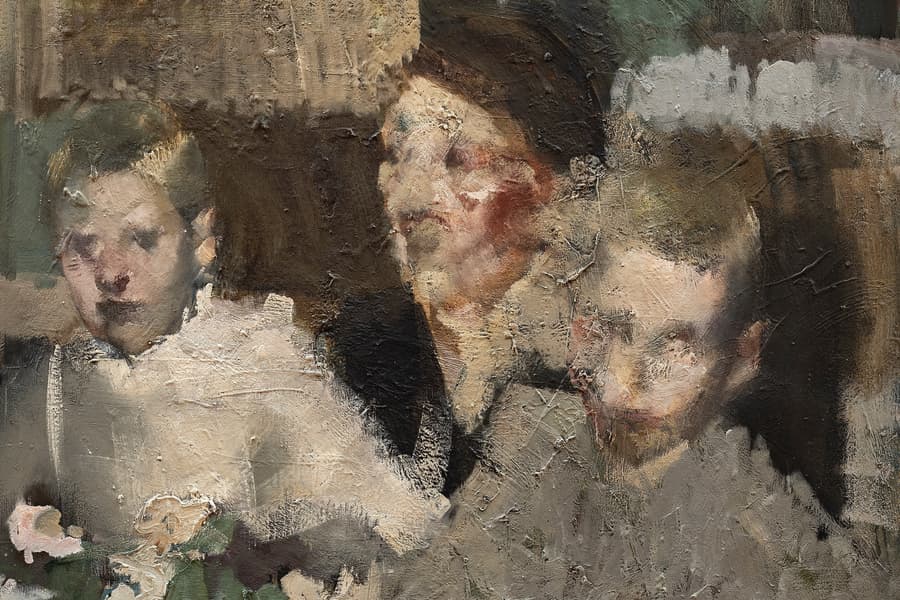Christian Skredsvig
12.06.54 – 14.07.54

Memorial exhibit
In this decade we can celebrate the 100th anniversary of most of our great naturalists, and we take the opportunity to once again get an overview of their life's work. Time and again we have to ascertain how young and alive they still are as artists, these legendary figures in our cultural life.
They were the ones who cleared space for a visual art rooted in the Norwegian environment. Each in their own way, each with their own distinctive tone, they contributed to laying the foundation for a modern Norwegian art tradition. With them, all our painters have since found elements they could be inspired by and use.
This time it's Christian Skredsvig we're celebrating - and we're looking forward to meeting his art. It is about this peasant boy who won the princess and half the kingdom but who preferred to rule over Hagan in Eggedal.
After years of study and toil, the poor, uneducated miller's son reached a solid mastery of his artistic tools. His pictures from the early 1980s are characterized by the good French school, are based on thorough realistic observations, are wisely and solidly composed, and painted with love for good craftsmanship. Then he also won a coveted gold medal at the Salon, sold pictures to the French state, was appointed a jury member at the World's Fair in 1889 - and could easily have followed his ambition to new European victories. Instead, he chose to follow the romantic longings in his mind.
Already with "Ballade" you notice ideas and feelings that go beyond the realistic form - and soon they brought him home from France - to the fairy tale and the dream, to folk songs, Grieg and Vinje, to Fleskum, Telemark and Eggedal. For many years he was probably still European, but soon he settled down for good at Hagan in Eggedal and lived his own strange, tension-filled life, oscillating between free-spirited gaiety and black tragedy-penglen, lonely and dissatisfied with himself from time to time, but full of joie de vivre when life went well with him.
With all of Skredsvig's lyrical feeling and his joy in telling stories, it was probably significant that he came up with the poem. He went with so much that could not easily be translated into painting - and he became a great poet. It is still unfair if his painting should stand in the shadow of the books - and we hope that this exhibition will show that.
Most of the main works are included here, we have had to forgo some of the largest ones for reasons of safety, but one - "Son of Man" can at least be seen in the National Gallery.
But first of all, of course, the exhibition is important, and we have many people's help to thank for organizing it. First and foremost, all the museums and individuals who have willingly lent us pictures', but also many who have assisted us with information.
The management thanks everyone who in this way honors Skredsvig on his 100th anniversary.
-Reidar Revold


